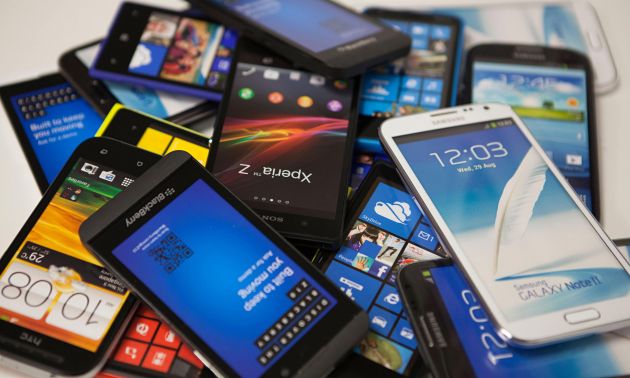9 trends for the technology market that should intensify in 2016

Smartphones replacing our portfolio, more powerful cameras, more capacity to store your data. They seem to things that can not be news to many people, but for SanDisk these are some of the concepts that promise to further intensify in the coming year. The company listed nine expectations of the IT market in the coming months and consumer needs with respect to issues such as mobility, Internet of Things, among others. See below.
1. The ability of smartphones continue to grow
According to IDC, the digital universe will reach 44 trillion gigabytes by 2020. The truth is that our consumption and generation data is growing rapidly. An area where it is very clear is the mobile device, in which more and more photos and videos are being caught with larger applications and many of us stay connected longer to social networks. The smartphone makers, meanwhile, are expanding their capabilities. In 2015, the storage capacity on average a premium cell was 38.9 GB. By 2018, this number will nearly double to 77.2 GB worldwide. An interesting fact is that the high-end smartphones such as the iPhone 6 and the Samsung Galaxy S6, already have the same internal space (128 GB) MacBook most basic Air, and you can instantly add 200GB extra to compatible phones with a microSDXC card.
2. Capture (and record) it
Pictures and videos of smartphones will be even more amazing. That’s because the cameras are evolving from basic equipment made to capture pictures simple to more advanced devices, thanks to applications and technologies such as Live Photo, slow motion and software that allow consumers to edit images directly on the handset. As the image processing capabilities and performance increase on the phones, consumers begin to capture more pictures and videos, which encourages companies to create new products to meet expectations.

With more people taking pictures with their smartphones, the camera manufacturers have forced the limits of technology and exploring new markets. 3D cameras, virtual reality systems, large amounts of megapixels (80 MB), cameras that can capture panoramic pictures 360 degrees and video and capture to a 1,000 frames per second speed innovations that are coming soon. The 4K Ultra HD is another phenomenon of mobile devices. We will have new sites and new ways to take advantage of the extreme resolution that will come from the most unexpected places.
3. Network connection
The networking is one of the wonders of the digital revolution, but also the weak point. Users want to download larger files, more often and in less time. The global internet traffic will triple over the next five years, according to some forecasts. According to Danny Kaye, executive vice president of technology strategy and global survey of 20th Century Fox Home Entertainments, average speed Internet can increase the current 5 Mbps for only 11.3 Mbps by 2019, but even now in 2016, we have companies beginning to challenge the limits of network connection speeds. We will also see companies explore creative strategies for caching, spectrum jump and management of the Internet of Things.
4. New companies prey on the mobile technology environment
According to Gartner, Huawei was the smartphone maker with faster growth in the second quarter. Other brands in China, such as Xiaomi and Lenovo will continue to tinker with cellular markets with new designs and new ways to sell directly to consumers.
5. Users will not want to wait two years for an upgrade of its smartphones
For years, contracts with mobile operators caused confusion when many wanted to upgrade their phones – the inevitable two-year contract meant an upgrade every two years. In 2016, consumers will switch appliance in much less time thanks to contracts that will allow a faster upgrade. This means that many will have the latest technology in much less time, while the rest of the world can take advantage of a smartphone with remanufactured technology (almost) tip. Readapted gadgets are becoming a significant market. It is expected that this trend will grow from 53 million in 2014 to 275 million in a few years. A common tip smartphone can pay $ 50 and a good iPhone can fetch between $ 200 and $ 400.
6. Memory Cards will assume a new role
The number of phones with card slots microSDT has remained remarkably stable at 75% over the past few years, according to Strategy Analytics. In the near future, the use and versatility of slots and microSD cards will grow. One reason is the dilemma of whether or not delete your files: people are running out of space on their phones and want a way to continue taking pictures, especially in emerging countries where the most basic phones are the majority. Another important technology is the USB Type C, a door that works for food and how memory slot. And we also have the versatile microSD format. Google and Microsoft included support in their operating systems that allows the use of the microSD card as the main memory.
7. The entry-level markets no longer the simple technology behind

Emerging markets accounted for 76% of all smartphone sales in 2014, and that number will rise to 82% by 2020. This will bring many innovations at the basic level. Consumers in these places do not want the technology of the past, but high-end features at low prices. In 2014, phones that cost less than $ 200 accounted for 60% of the market. 2020 phones less than $ 200 will account for 70% of sales with half of these handsets costing less than $ 100.
8. Your smartphone will become your key to connect to all
Not long ago we begin to trust our smartphones to take pictures or to guide us on the way to our destinations. Now we can use the mobile device to jump-start a car, unlock the front door or changing channels on television. As dependence on mobile devices increases, we will continue to converge with the trend of the Internet of things to create new capacities in 2016 that were previously not possible. Whatever these new capabilities, have fast storage will be crucial to ensure that they provide a good experience for users.
9. Internet of Things will generate need for flash storage in new areas in 2015 was an incredible year for IoT
There have been many advances in connected cars, an increasing number of segments seeking ways to improve efficiency and ROI (Return on investment in Portuguese) through connectivity. The consistent relationship between all these segments is not only the fact that they are “connected”, but that this connected experience high-capacity storage demand, fast and reliable – which usually means flash storage. As we approach the 2016, the IoT promises to continue to have an impact in these areas, as well as new markets such as healthcare, utilities and robotics.
Full article: http://corporate.canaltech.com.br








